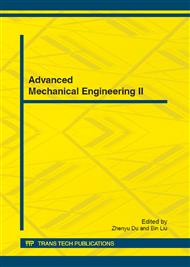p.3
p.8
p.14
p.19
p.24
p.29
p.37
p.42
Research of Data Processing Methods for Metal Cutting Finite Element Analysis Results
Abstract:
In this paper, the turning process of 45# steel was simulated and analyzed based on the metal cutting finite element analysis software DEFORM-3D. The analysis result of cutting force was gained. However, due to some reasons of the software itself, there is noise data in analysis results. Thus, it’s needed to filter the data to extract useful information. The selected short-duration and steady-state cutting force data was processed with the use of six-sigma rule through mathematical statistics analysis. As a result, some bad data were rejected. Noise data was filtered out via wavelet analysis and the processed function curve of cutting force that changes with time during the whole cutting course was gained.
Info:
Periodical:
Pages:
14-18
Citation:
Online since:
July 2012
Price:
Сopyright:
© 2012 Trans Tech Publications Ltd. All Rights Reserved
Share:
Citation:


